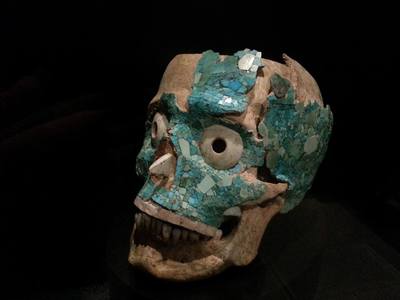An Englishman’s Perspective of Day of the Dead
You’ve probably heard of and seen day of the dead depicted in popular culture, specifically I expect you’ve seen elaborately decorated “sugar” skulls, death figurines, and death themed alters (ofertas) in documentaries or popular articles about Mexico. But I’m going to tell you what I know about it from being in Oaxaca for day of the dead this year.
“Day” of the dead is not really a day at all. Originally, the Aztec forefather to Day of the Dead was a month long festival that began at the end of harvest in August. Day of the dead is thought to have evolved from this celebration and may have roots that go back several thousand years.
When the Spanish invaded Central America just a few hundred years ago, a principal tool of their domination was Catholicism. Disease was another, albeit unintentional, genocidal apparatus. Combined with the more traditional favourites of slavery and execution, the Spanish managed to reduce the indigenous population from approximately 25.2 million people to around 700,000 over a period of about 100 years [1].
As a side-dish to this apocalyptic entree, among other horrors, these demonic forms destroyed the Aztec city Tenochtitlan, partially destroyed Zapotec Mitla, and almost succeeded in wiping out all written and spoken Maya leaving only 4 (!) of the many thousands of books that the Mayans wrote. To paraphrase Richard Feynman: imagine our civilization reduced to just 4 books!
Naturally, being as tiny minded as they were violent, the conquistador zealots did not like Day of the Dead but decided, presumably to avoid causing a revolution, to allow its continued celebration among the indigenous population so long as they obeyed several conditions. The principal of these was that the duration of the festival was curtailed to three approved days and moved forward in phase from August to the end of October. Day of the dead was thus formalised as being on the 31st October, the 1st of November, and the 2nd of November. It is no coincidence that the latter two days mark the Catholic “all souls day”. “Dominate everything” was the mantra of the invaders.
Following a few hundred years “integration”, the present day festival is a strange amalgamation of pre-Hispanic ritual, some catholic elements and iconography, as well as a humorous take on death (perhaps betraying denial), that some believe was a coping mechanism for the genocidal years where death was a daily companion and had to be faced somehow lest complete social paralysis take hold. [1]
In truth, the present day festival still lasts much longer than three days. Celebrations begin several weeks before the 31st, much like is the case with the modern celebration of the winter solstice, sorry, Christmas, in western nations. Don’t worry, I love Christmas regardless of the Christian takeover..
People celebrate day of the dead slightly differently depending on where in Mexico they come from, as there are many different indigenous influences (16 different indigenous populations in Oaxaca alone). I’m sure some and will contest my interpretation below, but this rough timeline is approximately true of contemporary Oaxaca city at least (I’ve only been once):
Two to three weeks prior to day of the dead
Markets start selling day of the dead merchandise. Pan de muertos (bread of the dead) start appearing in bakeries and other shops. Pan de muertos can traditionally come with a toy skeleton inside it, which is said to bestow fortune on the lucky finder.
Camparsas start happening on the streets (the earliness of their appearance may be a logistical consequence of the large number of camparsas that take place, coupled with the police presence and authorization they often need).
A camparsa is a procession that has one or more brass bands playing cool dia de muertos songs. The people are dressed up in death-themed costumes and are acting very jovial. Mezcal is often involved. The purpose of a camparsa, I was told by my Zapotec/Mixtec heritage friend, is to round up the dead that might be wandering around the streets early, to tell them to go home to their relatives.
One to two weeks before day of the dead
Alters start going up around the place and the intensity of day of the dead celebrations increases.
Local authorities put on artistic shows, and sand paintings are made.
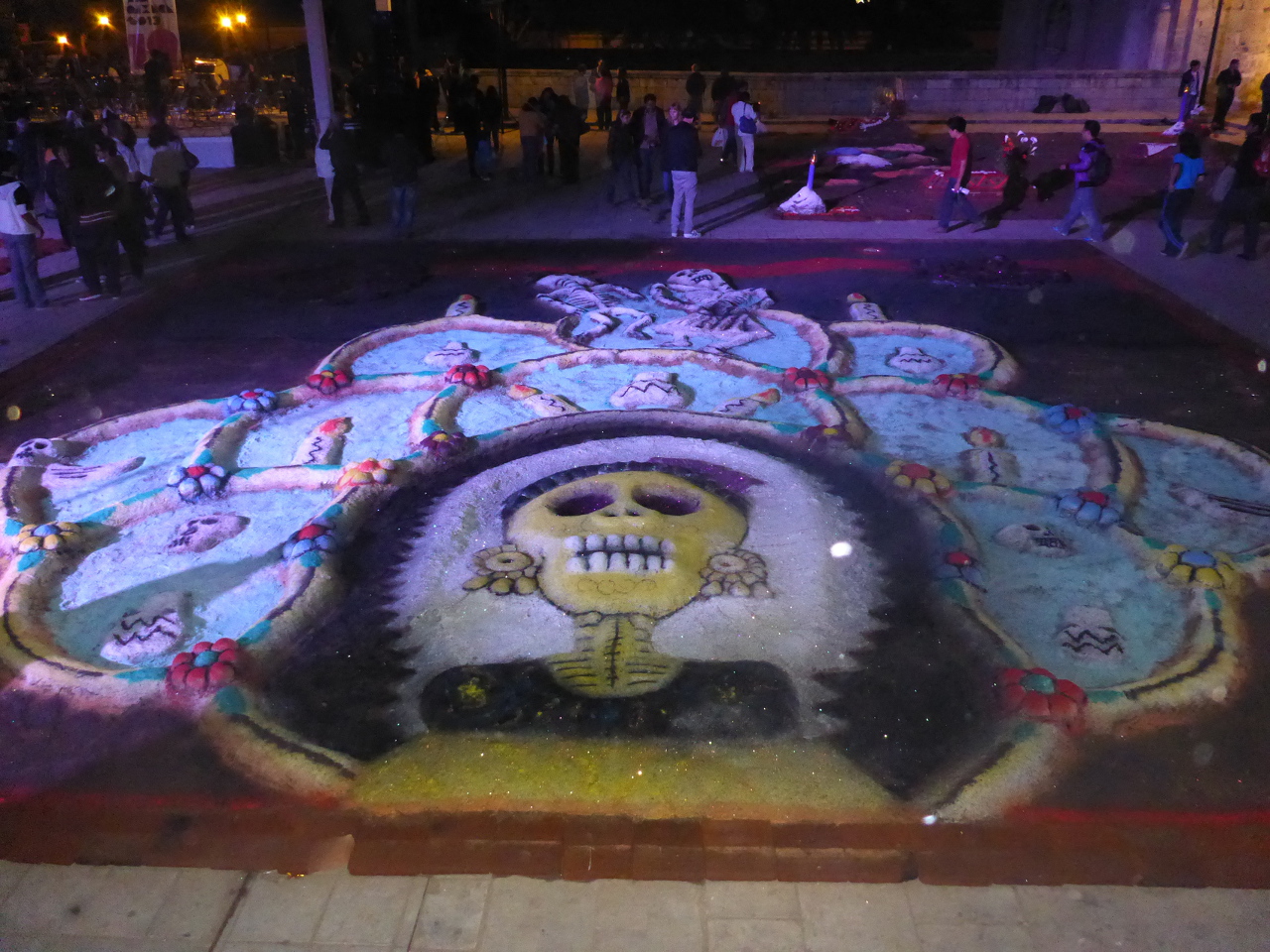
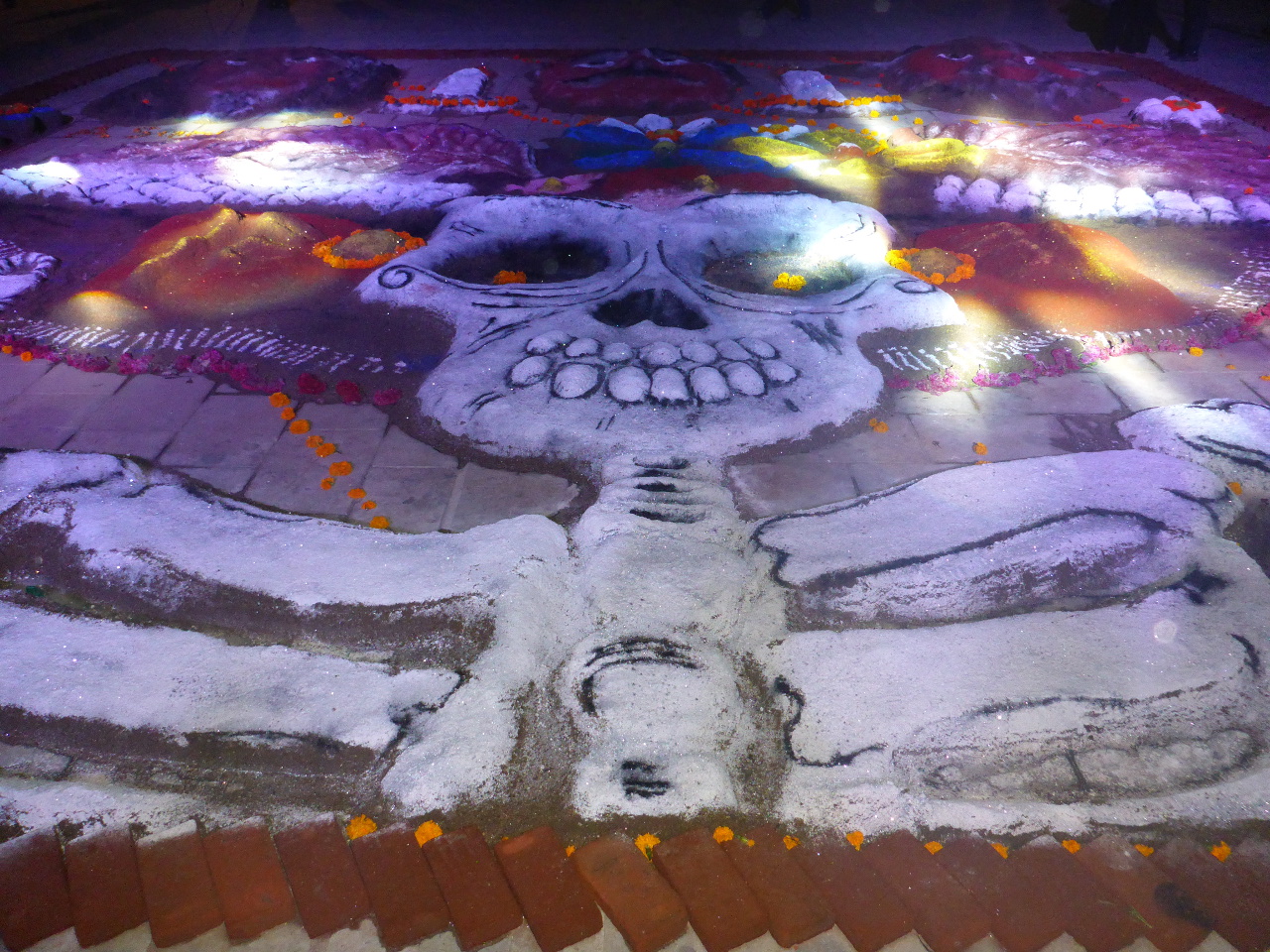
Catrina competitions and other costume competitions are held.
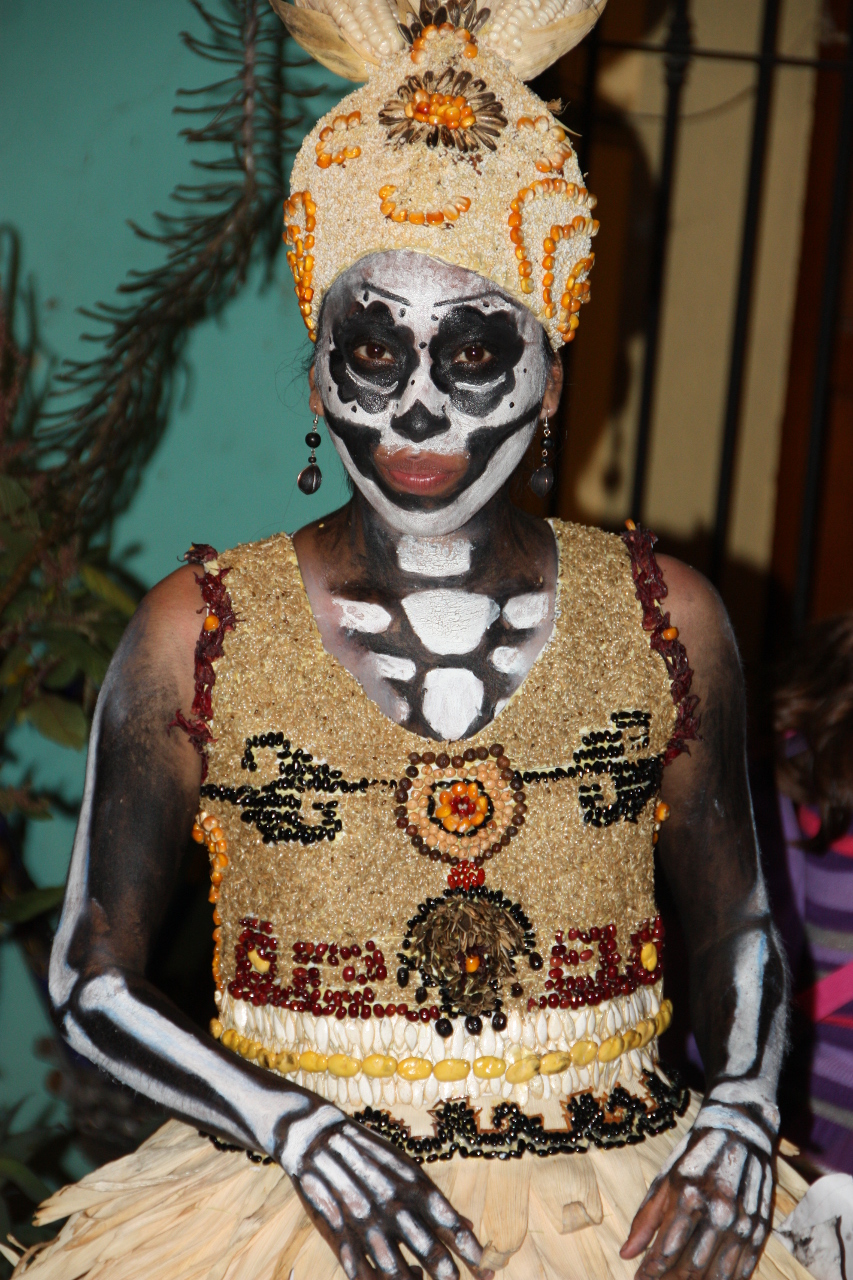
More and larger camparsas.
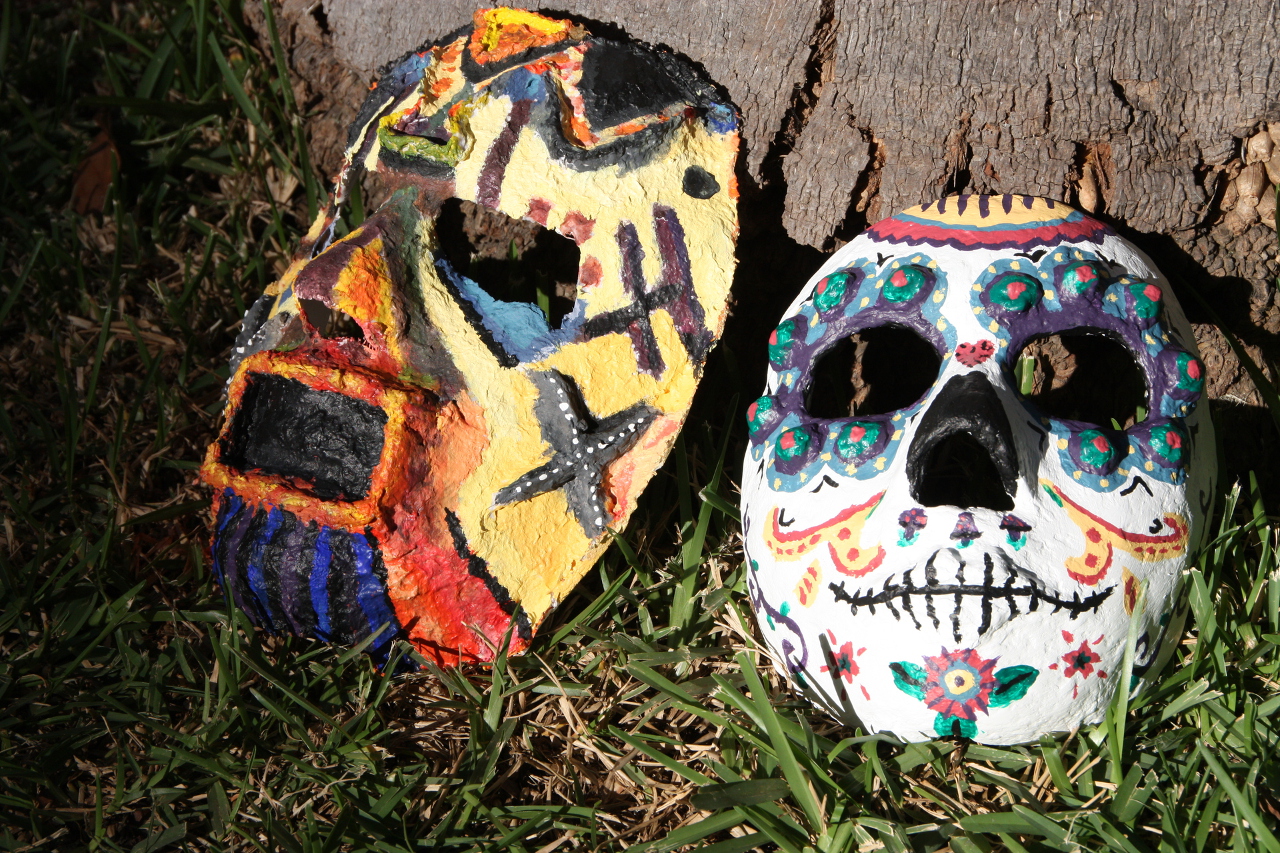
31st October
Alters are all up, the alter contains food offerings for the dead, cigarettes, mezcal, and everything else they need. Copal (a very intense incense from tree sap) is lit and burned to bring in the dead and to bridge the gap between the real and spirit world. The dead are famished from their tiring journey into our realm, and must be provided for.
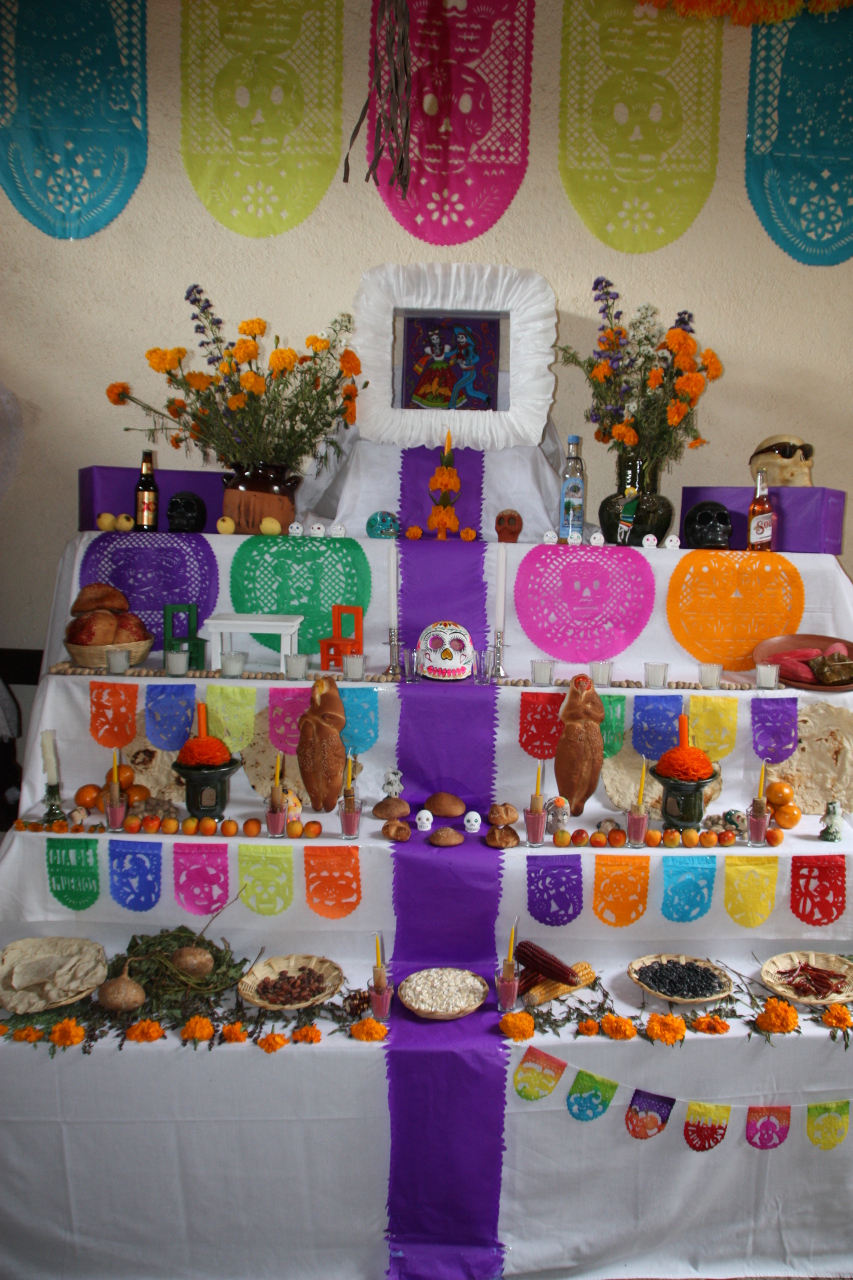
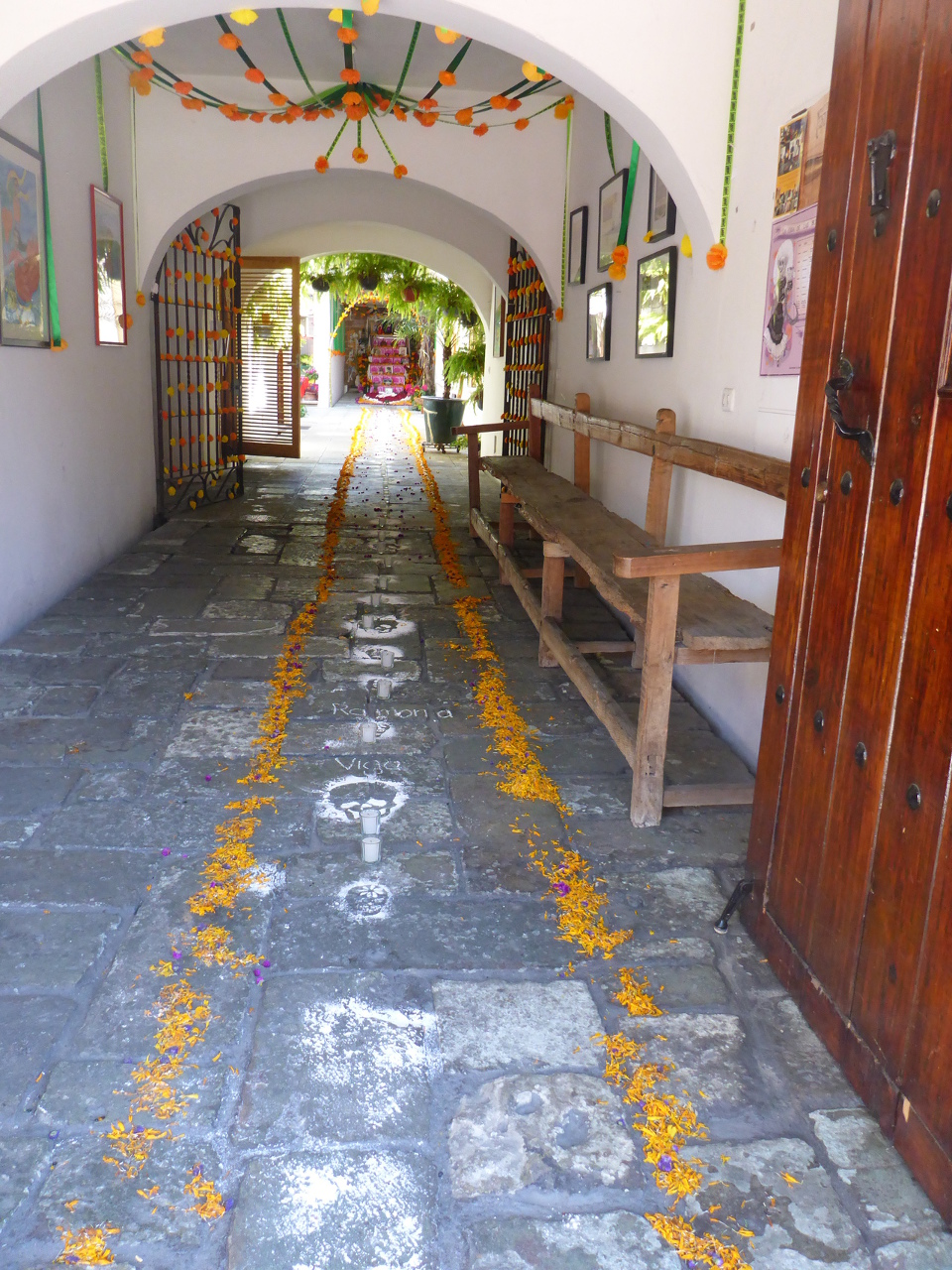
Many tons of yellow and other flowers from the mountains, and cultivated marigolds are placed around everywhere. The dead need strong smelling things to stimulate their senses.

Intense parties occur. Teenage boys fight each other with firework-emblazoned bulls. The brass bands go really crazy and team up into mega-bands on the street.
People have celebrations in their homes and much chocolate is drunk.
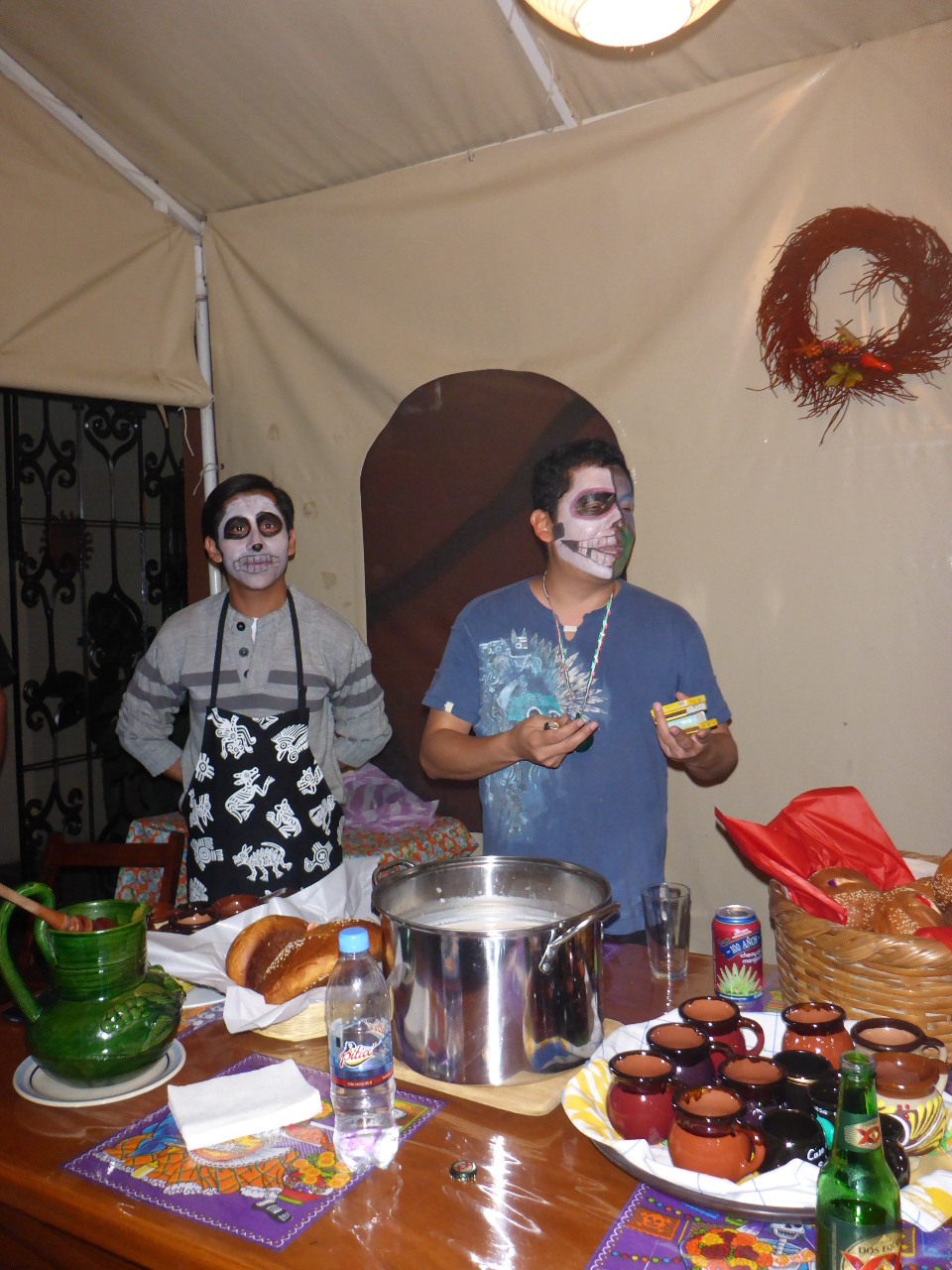
Ad-hoc and very large camparsas of much greater spiritual intensity occur around the towns.
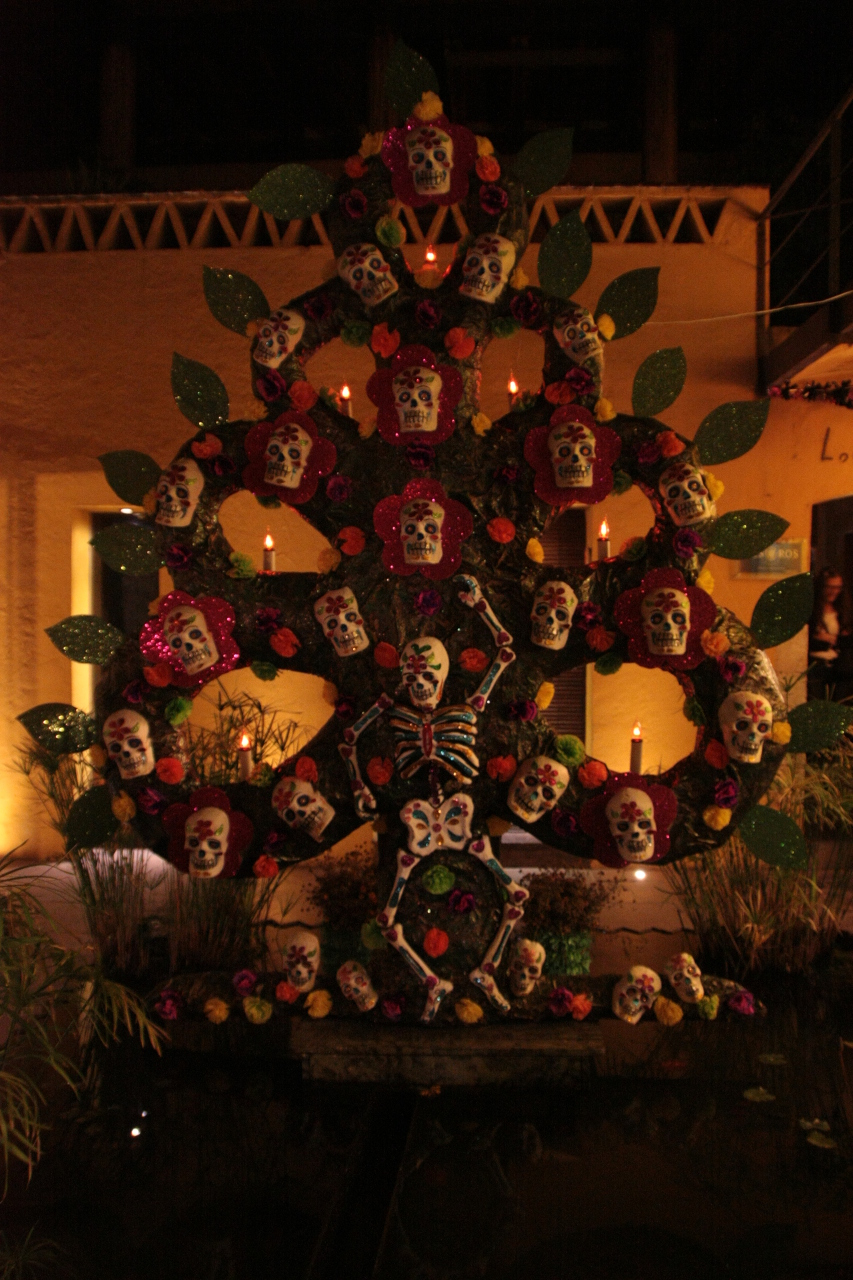
People go into the cemeteries to wake their dead and sit with them as they come out the ground and into the realm of the living. The cemeteries are absolutely covered in yellow flowers and are full of candles, people, music, food, and activity.
The presence of the dead is much more widely and obviously felt.
1st and 2nd of November
The dead are back now and with their families, the child dead are also there. Sometimes this is separated out, with the 1st being for the children and the 2nd for adults. In other parts of Mexico it’s the other way around. In anycase the dead are back and enjoying the offerings.
People pay visits to the houses of others, to visit their dead. Anyone who knows anyone is compelled to take the opportunity to go and say hello. Visitors are encouraged to eat something by their hosts. The old of the village may sometimes visit almost every house, having known so many families and people in their time.
Towards the end of the 2nd, the dead go back to the cemetery. Processions often accompany them.
A trip to a cemetery on the 31st November: Atzompa
We arrived at the cemetery via a “tour” that was really a very expensive taxi, and told to be respectful but to go and enjoy ourselves and be back in an hour.
Being thrust into the breach like this imbued me with a sense of anxiety and trepidation.
All of my instincts told me I was doing something disrespectful. All around were candle-lit graves covered in yellow flowers and surrounded by what I perceived as mourning families. Over one grave, a girl was draped crying.
How disrespectful I felt, and how disrespectful I felt others were, standing around gawping as if the scene were some Disney World spectacle put on for our entertainment.
I felt anxious to move about the cemetery, worrying with every step that I might walk too near a grave and offend someone. I was utterly uncomfortable making my way further into the cemetery, having to navigate the extremely narrow paths which threaded between graves. The worst was having to say “excuse me” to move past families surrounding graves: it felt so intrusive.
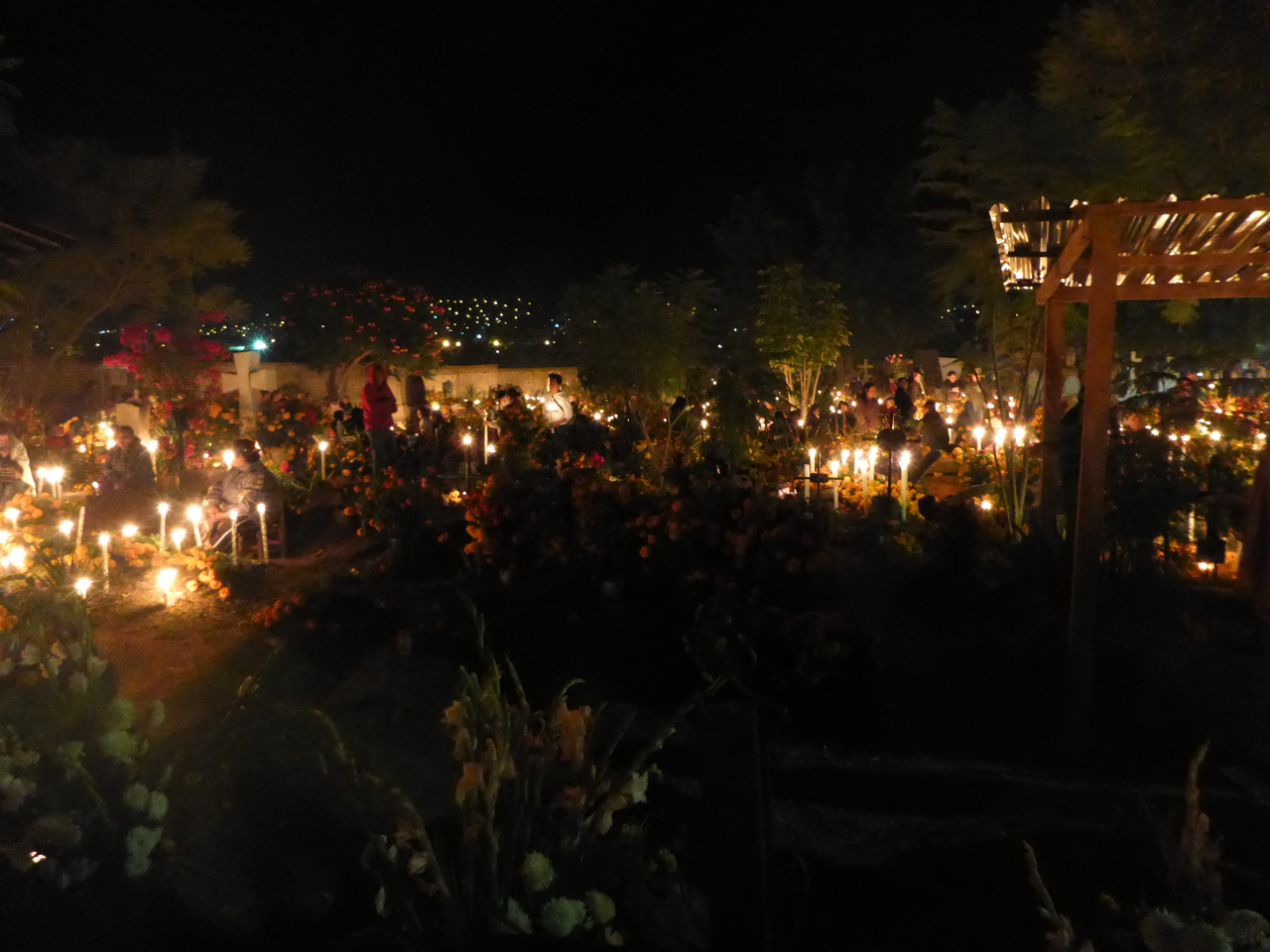
You cannot imagine the degree to which the reservedness of the English in me was affronted by the scene. I was paralyzed with worry, and wanted to leave, and I was struck by the conviction that bringing tourists here was utterly offensive.
Many of the other tourists did not seem to hold my reservations, there were people taking photos of every thing, camera flashes going off all over the place, even people with tripods! The craziest sight though was that of three American tourists whom had dressed up in LED-lit suits, and were dancing around and between the graves. I was just about ready to combust in shame after witnessing that.
I was of course grossly over-reacting, let me explain why.
You might be thinking tonight, what were LED-lit Americans dancing to in a grave yard? Presumably music of course, but where was the music coming from in a grave yard? I don’t know about you, but music isn’t a normal occurrence in British graveyards.
Well, believe it or not, it was a live band. That’s right, at the promontory of the cemetery, a full stage had been setup, and an amplified live band were playing mariachi and other music.
It’s strange, how something so obviously contrary to my perception of the place, had failed to ignite a change in perception earlier. The live band was for the people in the graveyard. This was my first clue that something totally different to my English experience was going on here.
Furthermore, on closer inspection, there were people drinking Mezcal, various other alcoholic drinks, and smoking whilst sitting around their family graves. In fact, many of the families appeared to be having a jolly good time at it too!
But I was still apprehensive for a long time: grubby cultural biases surrounding strong topics like death are very stubborn to clean off!
Nicola and I decided that we needed to try and relax and get more into the spirit of things. So we bought a beer each at one of the many stalls at the entrance to the cemetery (the presence of beer sellers should have been an obvious clue for us as to the nature of the event). Now, with our beers, we didn’t feel so odd. We still felt odd, but not quite as odd.
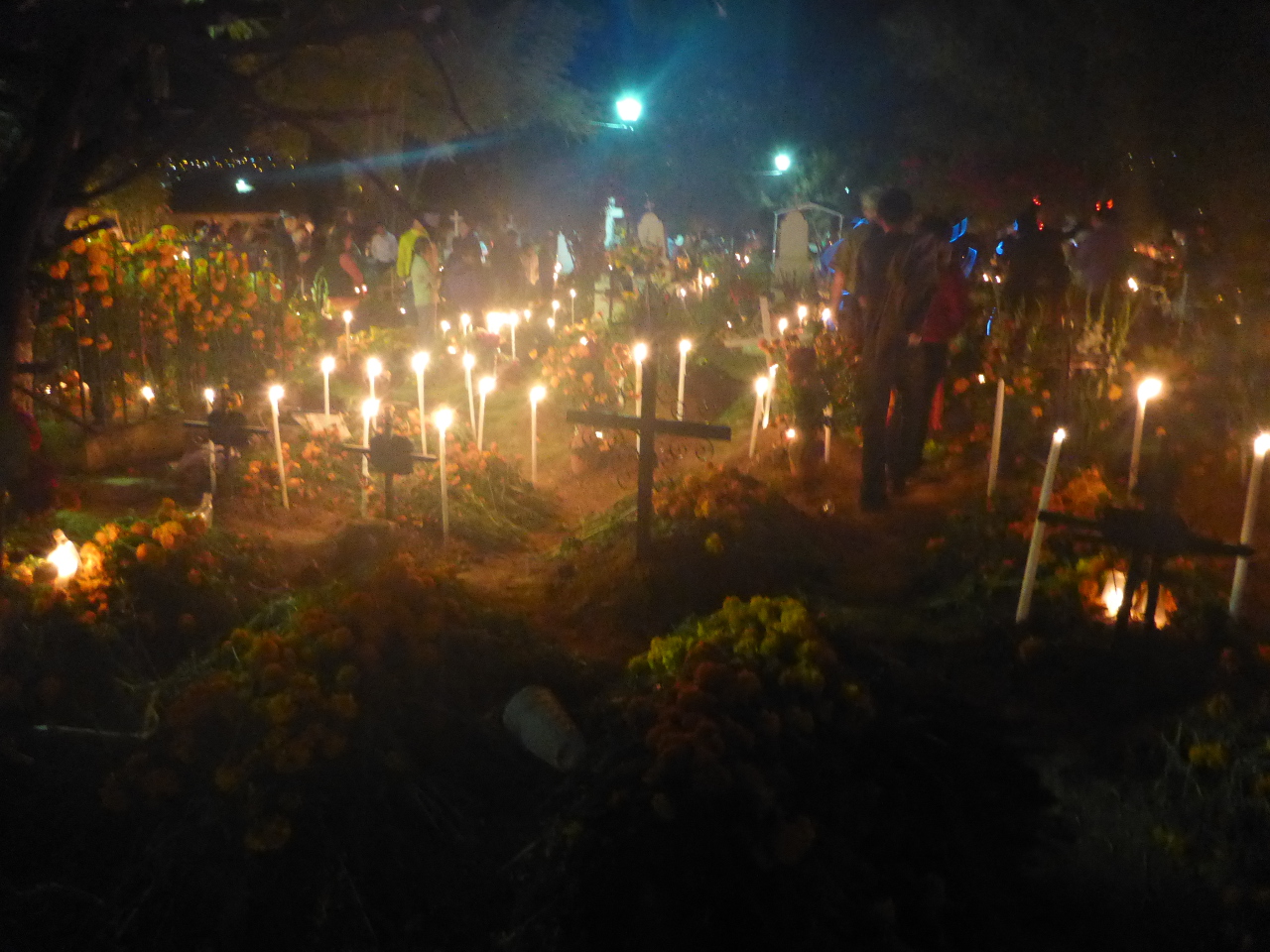
It felt now, like we had gatecrashed a stranger’s wedding, but were at least attempting to blend in and join in the fun.
Although, a wedding is very selfish in comparison to dia de muertos and focuses on a single family. Perhaps a better analogy is that it is if all the villagers were having a big joint birthday party in a public space, and we were strangers that had wandered in.
Now imagine, if you ended up a stranger at someone else’s party, the last thing you want to do is stand around gawping at people, and looking incredibly awkward. No, you need to join in, mingle, at least try to get some acceptance from the group. Of course, it’s not your family, so still there will be some strangeness about it, but most people are open and at most weddings there are people who come as partners that perhaps even the bride and groom don’t know. Nevertheless, they are welcomed in and their participation is encouraged.
From this perspective, re-evaluating the dancing Americans, even they didn’t seem as crazy as I’d first imagined. If you’re going to turn up uninvited at someone’s family gathering in a public space, isn’t it better to be at least entertaining? The girl who had been crying over a grave, subsequently went over to the LED-lit Americans, and posed for a photo with them whilst her mother took it. Several other children came up and did the same. Maybe it was OK, I started to think.
Many children were walking around dressed up in Halloween style costumes and asking for money in pots.
Copal was burning everywhere and the place was full of a candle glow.
A man was crying and wanted to tell us the story of his loved ones.
People were arriving at 1 and 2 in the morning with wheelbarrows full of flowers, chairs, drinks and family members.
It was the most powerful consciousness altering experience I have had without deliberately attempting to alter my consciousness (through meditation for example). I felt, probably for the first time in my life, a true extra dimension to reality that I hadn’t seen before.
You have to see and feel this for yourself, because I can’t describe it. But I’ll tell you one more thing.
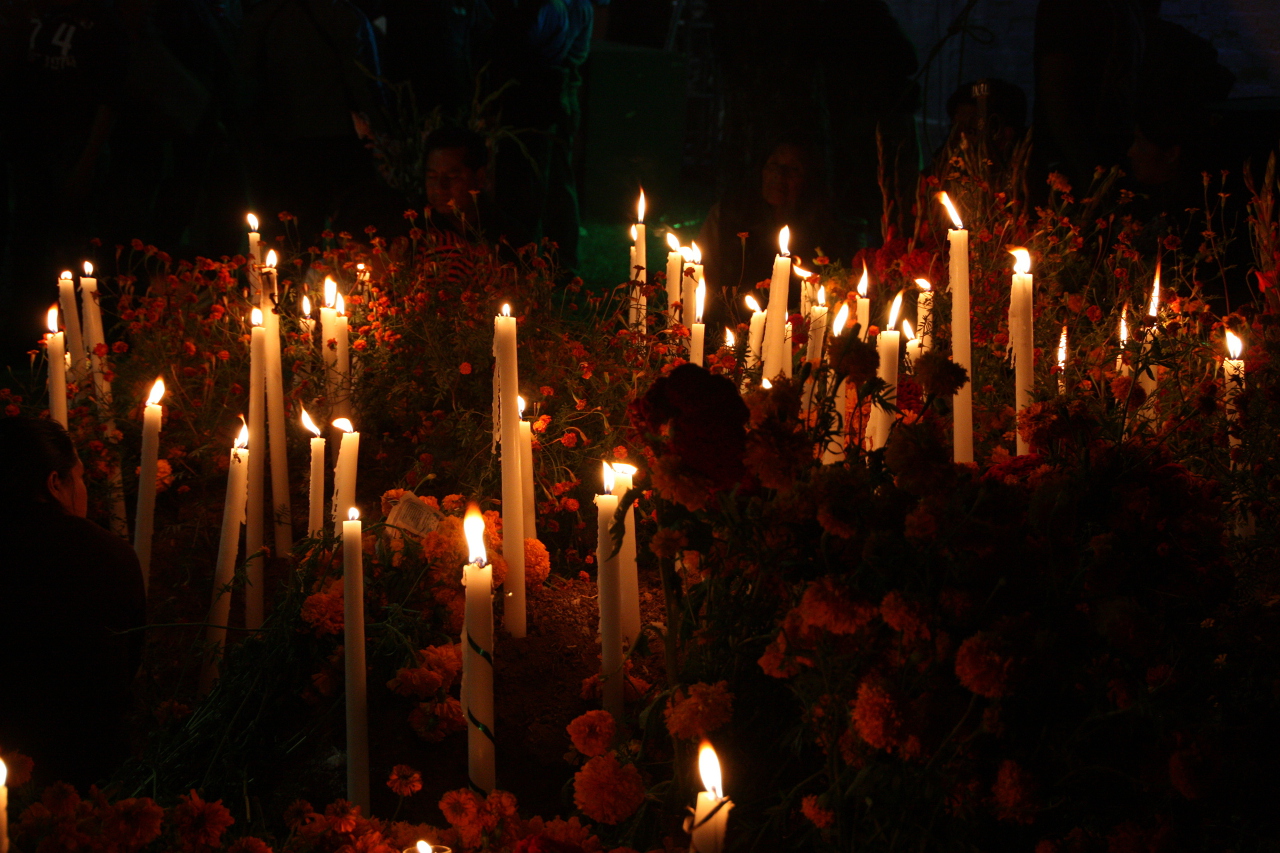
The roots of this festival extend throughout the country. We went up into the Oaxacan mountains for a three day hike and in one of the villages the villagers climbed up a hill to the tallest point on the mountain to dance all night with the dead. We met the mushroom man of the village the following morning and he was full of happiness. I showed him my mushroom pictures and he embraced me as a fellow mushroom man. The Zapotec culture is well connected with the true nature of reality and through the veneer of westernisation, if you are willing to look, you will see something incredibly powerful.
Reflection
Day of the dead is a festival of incredible cultural sophistication. It allows society to deal with the dead in a very healthy way.
Death is a constant from whom nobody can escape. Everybody mourns and everybody dies. Everyone is unified by death.
This is made absolutely apparent in day of the dead where family sees family at the cemetery, surrounded by death. Families comfort families, and help and support each other, as well as having a good time together.
The dead are not forgotten when they die, and something of them really seems to come come back every year in the manifestation of memory and consciousness of those who summon them.
Knowing that the dead are remembered year after year, the living reflect on this and incorporate this future into the present execution of their lives, unconsciously and consciously tithing the expectation of how they will be remembered.
The dead can be mourned in passing and ordinary personal grief processes are respected, but come the next year, the dead must be celebrated. It is the duty of the living to respect the dead and provide for them. Society supports itself in overcoming grief.
We should import day of the dead into our culture, as the dead deserve more than the barren and morbid treatment they presently get.

